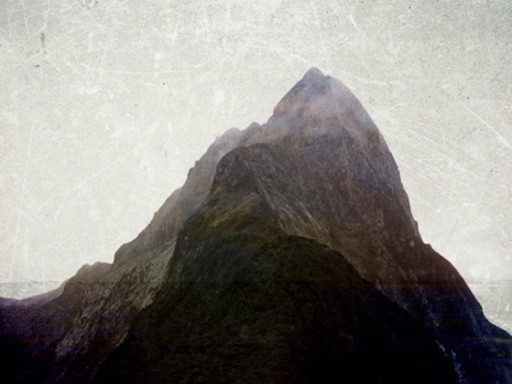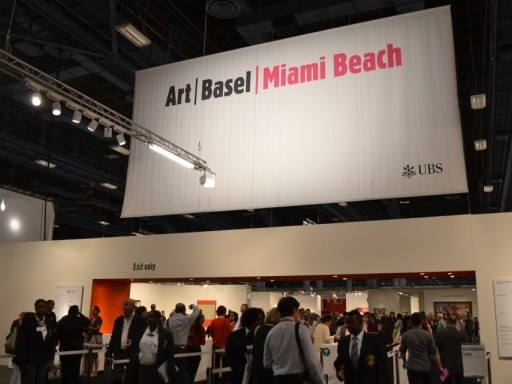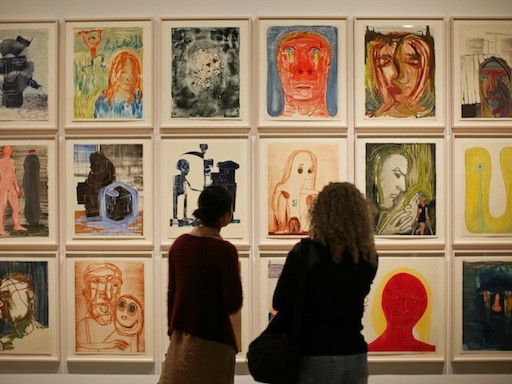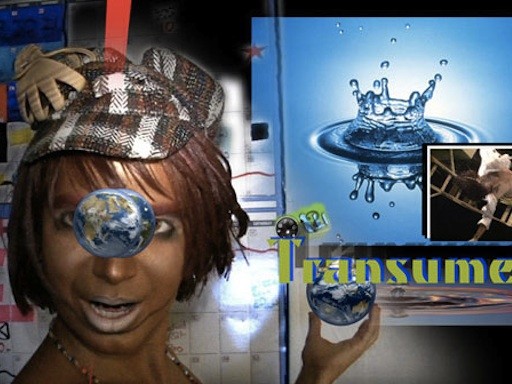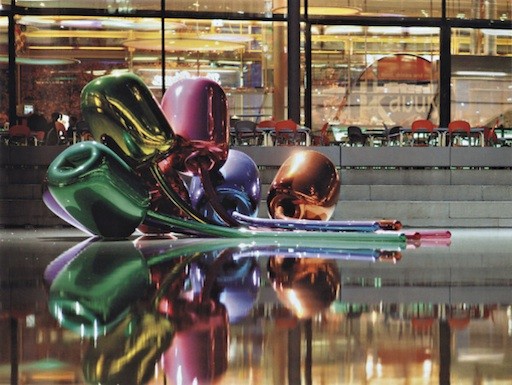— THE BIG STORY —
Looking back on 2012, it's easy to see a single story dominating the news coming out of the art world: the ascendency—no, the apotheosis—of the art market. It was a year of gobsmacking numbers, beginning with the world-record $250 million sale of a CezanneCard Players to the Qatari royal family and concluding with the biggest-ever auction sale ($120 million for The Scream at Sotheby's), the priciest-ever tally for a contemporary art auction ($412.2 million at Christie's), and the highest-ever attendance at Art Basel Miami Beach (50,000). But while those data points are certainly impressive, they don't tell you anything whatsoever about the state of art itself—where it's going, what it's thinking about, why it's relevant to life in the contemporary moment. The top of the market rarely has much to say about the truly new. For that, you have to delve deeper.
Just as the Moderns contended with the fragmentation of the old order, the Pop artists dealt with the enveloping assault of advertising and mass-communication, many artists today continue struggling to crunch down what the biggest societal upheaval of the day—the omnipresent creep of digital technology into our lives—means for the way we see the world, and art. Touring the art fairs in Miami, this couldn't easily be gleaned at the main event—where safely familiar pieces by the biggest names held sway, like the $5 million Jeff Koons that sold to Eli Broad—but it could at the smaller satellites, where things got weird.
One particularly interesting trend seems to focus on the intersection of nature and technology, as seen at Seventeen Gallery's NADA booth in Jon Rafman's video portraits of pastoral settings from Second Life (which he infiltrated with soldiers from first-person shooters); Zipora Fried's revelatory mountain landscapes at On Stellar Rays that she stitched together from hundreds of online images, hinting at a new sublime; and, scattered throughout Pulse, Adam Rath's sculptures of robotic fixtures randomly twitching long bird feathers at the viewer—a machine-animal hybrid that at first seemed groan-inducingly obvious but grew more deeply unnerving and grotesque with each sighting.
Hybridity, it so happens, was also the underlying theme of this year's Whitney Biennial, which was stranger by an order of magnitude than any other edition in recent memory. Few artworks were what they immediately appeared, and perplexing new currents were piped in from all directions—Sam Lewitt's creepy-crawly post-Matrix liquid floor piece, Tom Thayer's gorgeous paintings/stage sets, and Sarah Michelson's fond terrarium for "angelic" dancers were just three inclusions that tugged the viewer's brain in several unfamiliar directions at once.
But the key to the show may have been found in sculptor Robert Gober's tribute to the outsider artist (and outsider sexologist, and outsider surgeon) Forrest Bess, which filled a shrine-like room on the second floor. A mini-show curated by an artist about a painter who had transformed himself into a hermaphrodite (and who showed with Betty Parsons, the ultimate artist/dealer), it was a wriggling ball of contradictions that just barely reached a kind of odd synthesis—much as the biennial's other experiments in dance/performance, photography/painting, and other multifarious mashups. Overall, the polyvore exhibition signaled an era where the menu has expanded for artists, and where either/or has been riotously supplanted by both/and.
Which returns us to the top of the market, where something similar might be transpiring. (Remember I said it "rarely" has something to do with the truly new—sometimes it can.) The departure of Damien Hirst, the most famous and richest artist in the world, from the biggest gallery on earth is notable. Early in his career, Hirst catapulted into art history when he struck a deep, threnodic vein in his work, targeting the essence of death and making it stomach-tighteningly present in works like The Physical Impossibility of Death in the Mind of Someone Living.
Lately, however, his work has narrowed its focus by upping the ante on Warhol and taking questions about the artist's hand, the irreproducibility of the authentic art object, and the representative tradition of art and effectively bug-zapping them with his globe-spanning Gagosian spot show. Where once his theme was death, it became the art market, and where once his audience was "someone living," it became "someone very rich (and bored, and borderline nihilistic)." There is no doubt, however, that Hirst is a tremendously important artist—and perhaps, in the final analysis, after the punchlines of his Beckettian endgame jokes sink in, a great one. What he does next will be worth paying close attention to.
— QUOTE OF THE WEEK —
"If you’re an artist, you don’t start the morning by saying to yourself, ‘Hey, think I’ll change some idiot’s life today.' You work. To be really good at anything, assuming that you’re talented, is to work harder and longer, with more ruthless honesty and discipline, than other people could do without bursting into tears. Your secret is that, hard as it may be, it doesn’t feel like work to you. It feels normal, like eating and sleeping. You are not about to hand your own life over to anybody to change or to not change, though you might wish you could. And you positively do not accept responsibility for the lives of your audience. That’s not good for them, and it is a day-spoiling pain in the ass for you." — New Yorker art critic Peter Schjeldahlin an old SVA art talk (the best I've ever heard) about art, artists, critics, why they don't make them like Wallace Stevens anymore, and why he's a little disgruntled with the art world nowadays
— MUST READ —
U.S. Government Will Finally Measure Art's Effect on GDP — Thanks to a new partnership with the NEA, the Commerce Department's Bureau of Economic Analysis of at last begin tallying how much the economy benefits from museums, performing arts, and all other creative industries—a step that may yield concrete numbers to support federal funding for the arts, long attacked by the right as a liberal vanity project. (Bloomberg)
Artists to Watch in 2013? — Modern Painters has released its list of 24 up-and-comers, including the wonderful Margaret Lee, who last month won the first-ever Artadia NADA award for her work in that Miami art fair. (Modern Painters and Gallerist NY)
"The Most Famous Norwegian Artist Since Munch" — That would be the great Bjarne Melgaard, who shockingly hip éminence grise Charles McGrath—whose brilliant career has earned him the ability to cherry-pick whatever cultural story he wants—profiles on the occasion of the artist's Luxembourg & Dayan show. (NYT)
China Says No to Warhol's Mao — The Chinese government has banned the Pop artist's famed portraits of the Communist leader—which he made in tribute to “the ultimate star”—from the first-ever show of Warhol's art to tour mainland China when it travels to Shanghai and Beijing next year. (Bloomberg)
Is Rachel Whiteread "Britain's Greatest Living Artist"? — That's what Guardian critic Jonathan Jones thinks, and he adds that her sculpture Ghost is "the single most important British sculpture of our times." (Guardian)
Forbes Releases "30 Under 30" Arts List — Among the names the magazine has singled out art the artists Adam Pendleton and JR; Marlborough Chelsea head Max Levai; Grey Area co-founder Kyle DeWoody; and curator Alex Gartenfeld. (Forbes)
Jeffrey Deitch Has a Busy Month — In addition to helping judge Forbes's arts list, the Los Angeles MOCA director also took the time to interview actress and model Paz de la Huerta for her cover pictorial in the January/February issue of Playboy. (HuffPo)
Chuck Close, Ladies' Man — The renowned artist explains why he prefers creating portraits of the prominent women in his circle, despite the fact that many of them—from Cindy Sherman to Diane von Furstenberg—prove to be by far the most challenging of his subjects. (Telegraph)
Rob Pruitt on the Difference Between Art and Fashion — In an interview about his new artistic collaboration with Jimmy Choo, the artist says of the disciplines: "I think they’re equal but different. They’re not going to build temples to fashion, but the level of creative talent involved is probably not that different from the art world. It’s just that it’s disposable." (Bloomberg)
New Art-World TV Show in Production — The E! network has tapped Mean Girls director-producer Mark Waters to helm a new hourlong scripted drama called Gallerina that will follow a young woman as she tries to make it at an Los Angeles art gallery—"symboliz[ing] L.A. as the prestigious new center of the art world"—while keeping her "brains and morals" from disintegrating. (Deadline Hollywood)
The Grande Dames Guarding Russia's Museum — See Andy Freeberg's wonderful portraits of the female museum guards watching over masterworks at the Hermitage and other top Russian institutions. (HuffPo)
Considering the Salon in the Internet Era — Artforum has a nice piece on a talk that Pati Hertling hosted at the New Museum on the state of the artist salon these days, with details from the salon-like merriment and conversation that followed in various liquor-lubricated settings. (Artforum)
Who Is the Grinchiest Artist of All? —Jonathan Jones considers who would be the worst artist to spend Christmas with and after considering a few grumpy candidates—Pollock, Cezanne, etc.—settles on Michelangelo, who grumbled for years about the time a Medici asked him to build a snowman (seriously). (Guardian)
Richter Once Destroyed $655 Million of His Own Paintings — In a survey of art that artists destroyed by their own hand, Ann Landi looks back at the oeuvre-cleansing carnage wreaked by such artists as Jasper Johns, Agnes Martin, and other famous figures. (Art News)
— ART MARKET —
Simon de Pury Quits Philips de Pury — In what a Phillips spokesperson describes as "a shock to all of us," the lanky gaveller and auction house chairman who for 12 years has presided over the company has sold his stake to the Mercury Group, the Russian luxury conglomerate that bought a majority ownership of Phillips in 2008, and is taking his name and wife, Phillips senior director Michaela de Pury, with him as he departs. (Forbes and Artinfo)
See the Top 10 Auction Lots of 2012 — From a Picasso bust (with "sexually suggestive fruit") to Munch's famed cri de coeur, these are the priciest works to go under the gavel this year. (Bloomberg)
Hirst Collector Applauds Gagosian Split — Alberto Mugrabi, a market force who owns hundreds of works by Damien Hirst, says the artist's move indicates "where the market is moving"—toward more of a free-agent model—and also predicts that Hirst will show with Gagosian again "many times, in the future." (Gallerist NY)
All About Gogo — In the ObserverAaron Gell has a long, info-packed piece fitting the Gagosian defections into a larger puzzle of where the megadealer stands these days: commanding an unprecedented world-spanning gallery empire—with a horde of enemies massing on all fronts. (Observer)
More Analysis on Gagosian Exodus — Rachel Corbett looks at other artists who high-tailed it out of the dealer's stable, like James Rosenquist and Alec Soth. (Artinfo)
The Frieze Masters Effect? —Andrea Rosen has opened up a second gallery "dedicated to contextualizing the work on view in its main space" that art critic Karen Rosenberg says "may be a good indication of where Chelsea is heading." (NYT)
"At Once Comic and Nauseating" —Los Angeles Times art critic Christopher Knight looks back on a year when the contemporary art market blasted off to unheard-of heights, writing that the most pernicious outcome is that the market now holds unprecedented sway over museum programming, driving "the power of the for-profits and the desperation of the nonprofits" to "an imbalance greater than it has ever been." (LAT)
Read an Interview With Stefania Bortolami — The accomplished dealer of rising art stars like Richard Aldrich and vets like Daniel Buren talks about her life in the trade. (Artinfo)
Affordable Art Fair Expands to Hong Kong — The popular $100-and-up fair will open a new branch in the Asian art capital this March. (Artinfo)
David LaChapelle Sues Former Manager — The photographer is suing Fred Torres of Fred Torres Collaborations gallery for over $2.8 million in alleged shenanigans surrounding the management of his work. (NY Post)
— IN & OUT —
Louvre director Henri Loyrette has alerted the president of France that he plans to retire from the museum next April after a remarkable 12-year tenure that culminated this month with the opening of the institution's first satellite, a $200 million outpost in the northern town of Lens that will display a cycling array of masterpieces from the collection. (Art Newspaper)
Jeff Koons joins Richard Prince in the beverage business by becoming the latest contemporary artist to design a wine label for famed vintner Château Mouton Rothschild, creating an oddly Cy Twombly-esque graffiti riff on a Pompeian fresco. (Drinks Business)
Nate Lowman caps off a bumper year with another New York Times profile of this "star of a young downtown art scene that moves freely among the worlds of fashion, art and society." (NYT)
Paul Kasmin Gallery has signed Edith Dicconson as a new director, recruiting her from the Chinese Porcelain Company, where she was a director for eight years. (Katya Kazakina's Twitter)
The Whitney Museum has "topped out" construction on its new Renzo Piano-designed building in Manhattan's Meatpacking District, with the final steal beam on the $720 million nine-story structure being signed by Whitney trustees and staff before being lodged into place. (Press Release)
Christo has donated two works to the state of Colorado, evidently in an effort to grease the wheels of his controversial Over the River project, which has been stymied by opposition from protest groups and the U.S. Department of the Interior. (Denver Business Journal)
To mark this year's passing of the revered conceptual artist and teacher Michael Asher, art historian Alexander Alberro memorializes the Los Angeles icon with a look back on his best work. (Art in America)
A1 News RoundupWhat Happened to Art in 2012?
